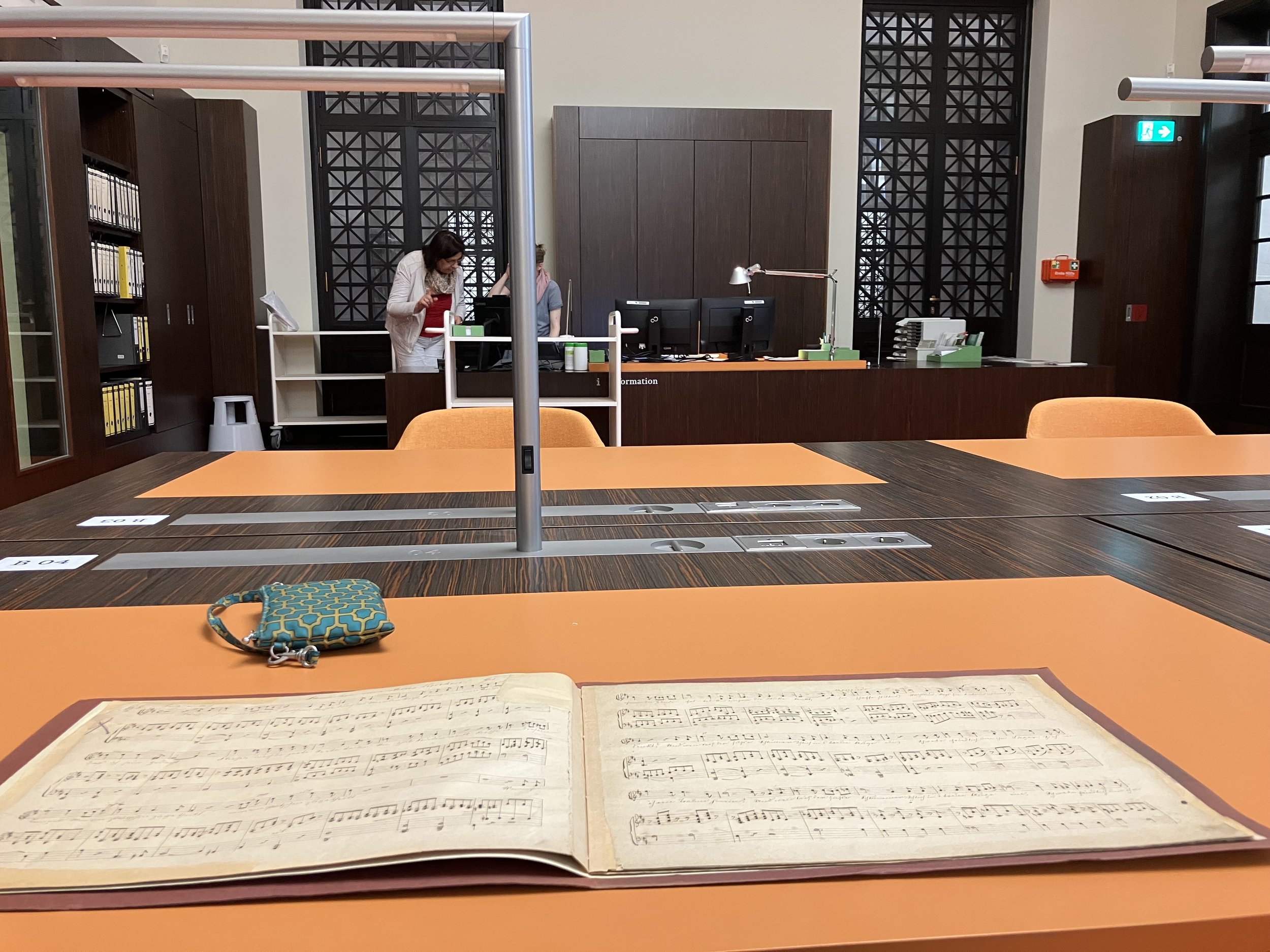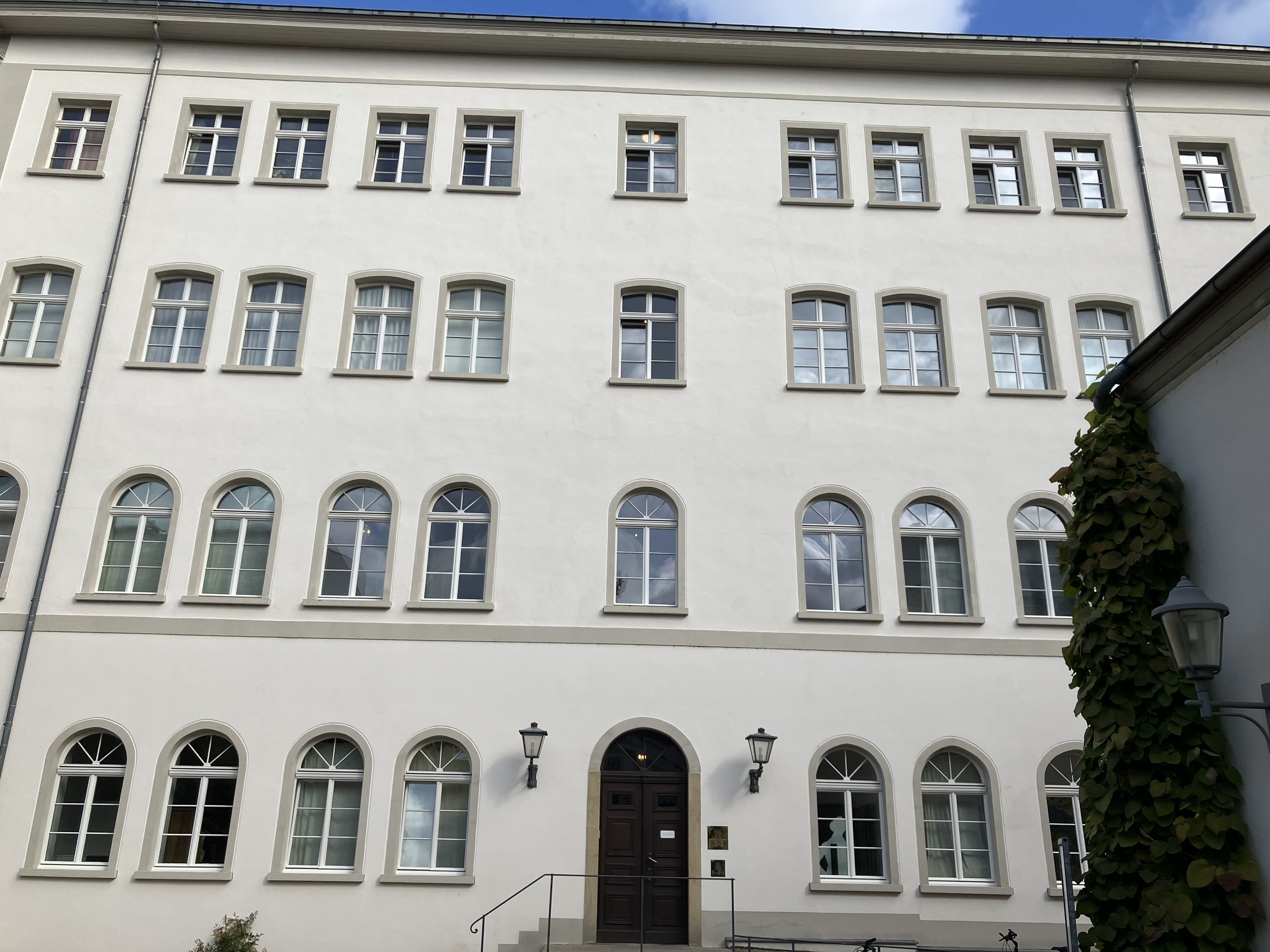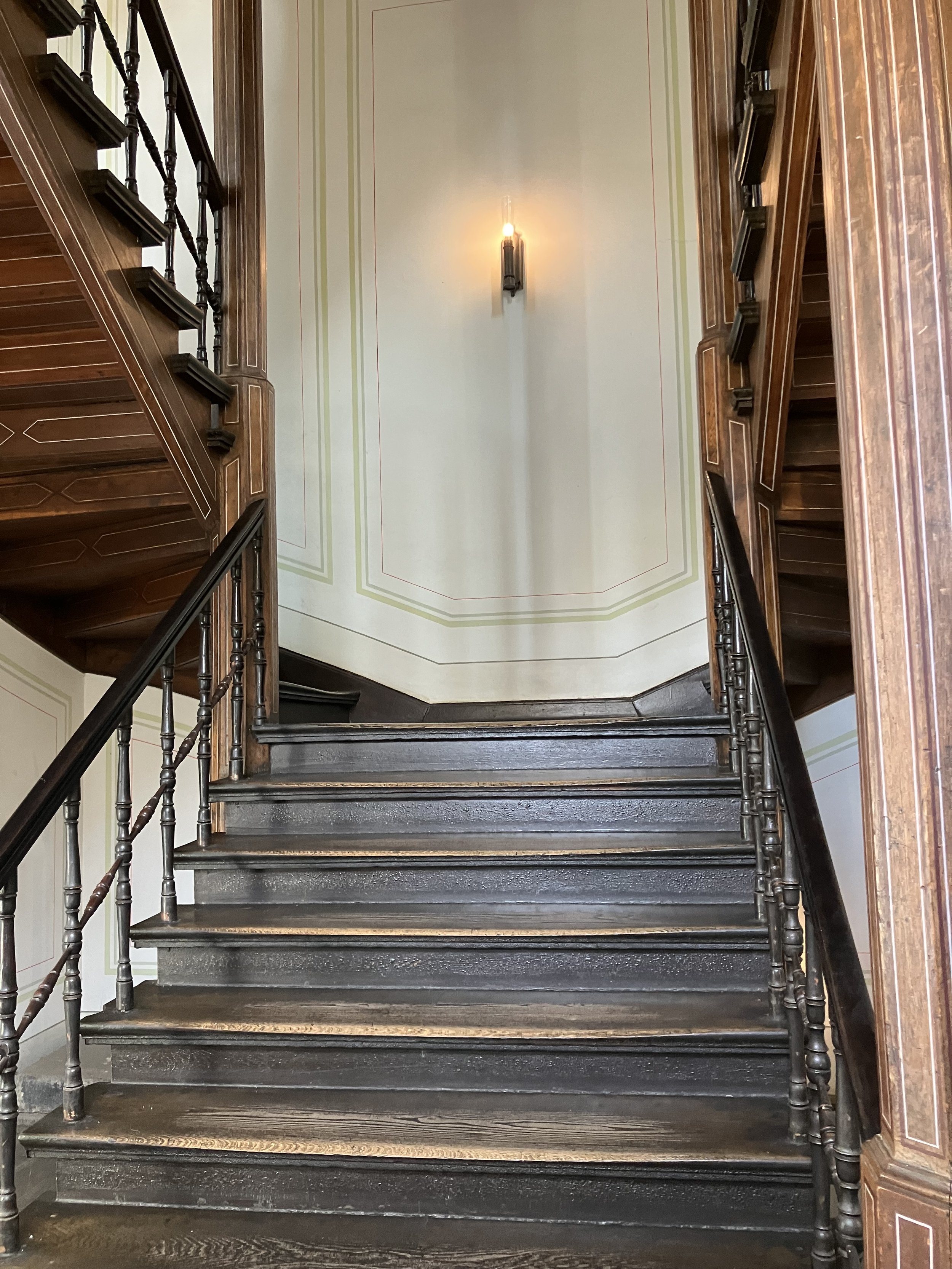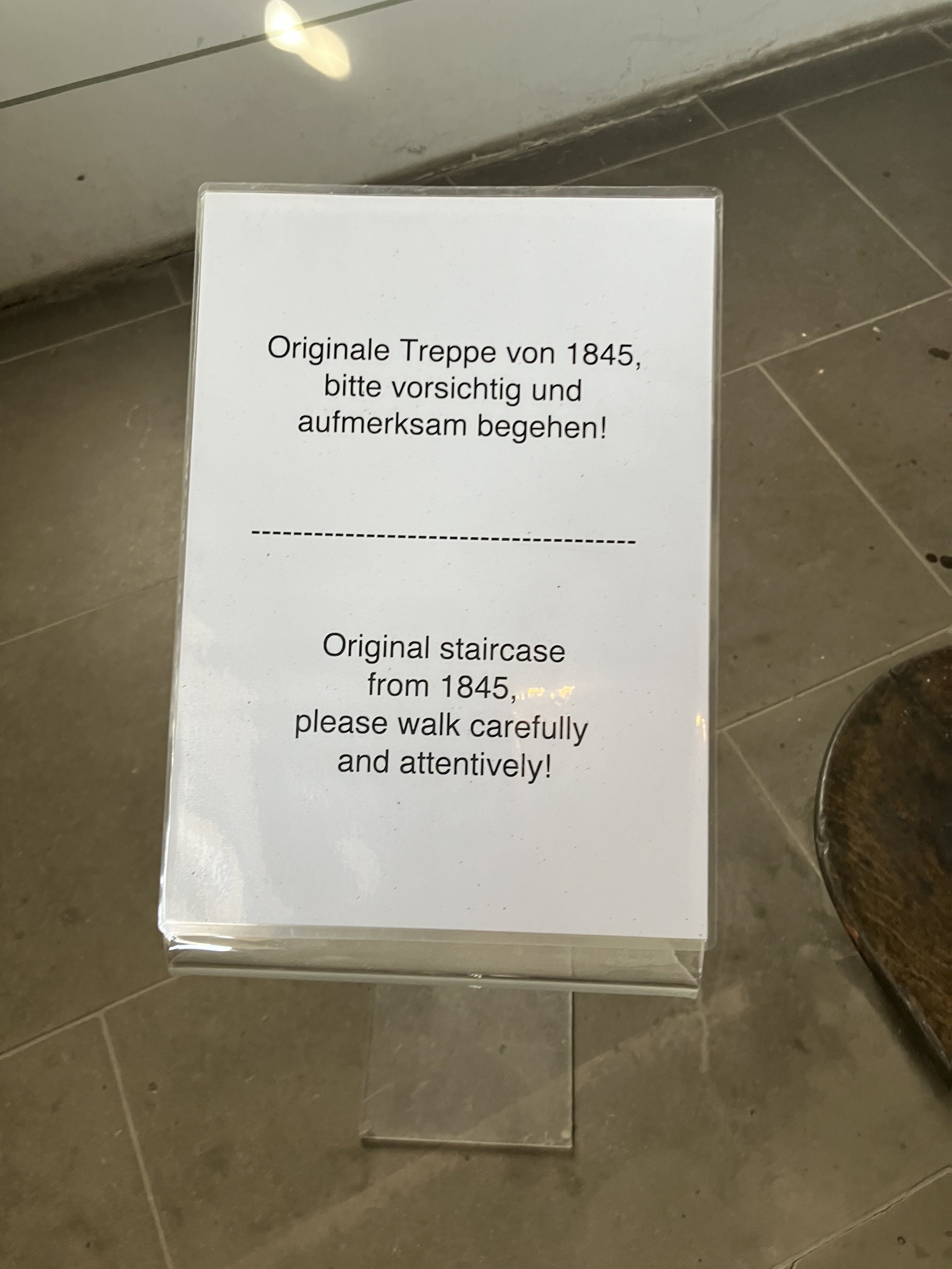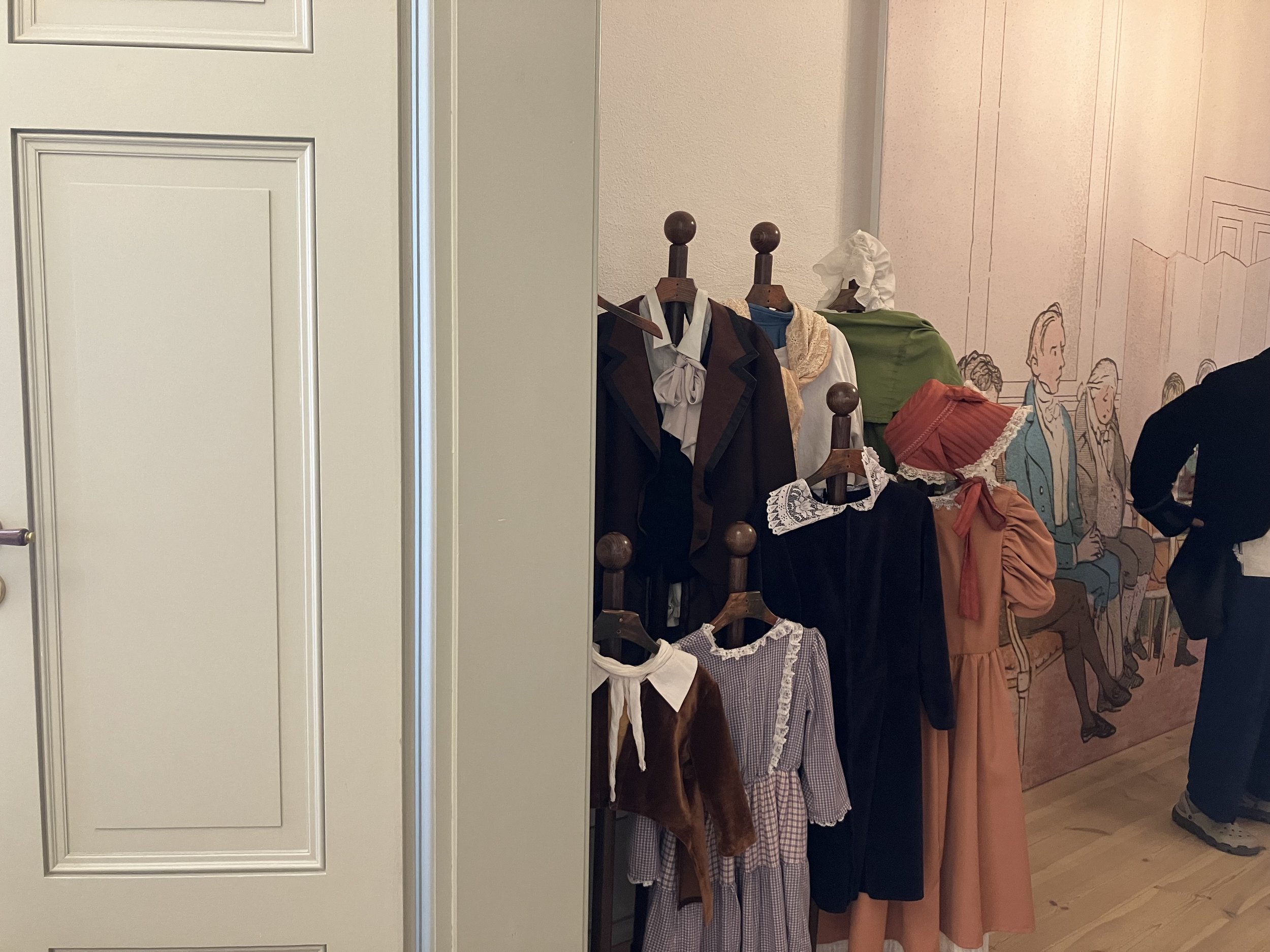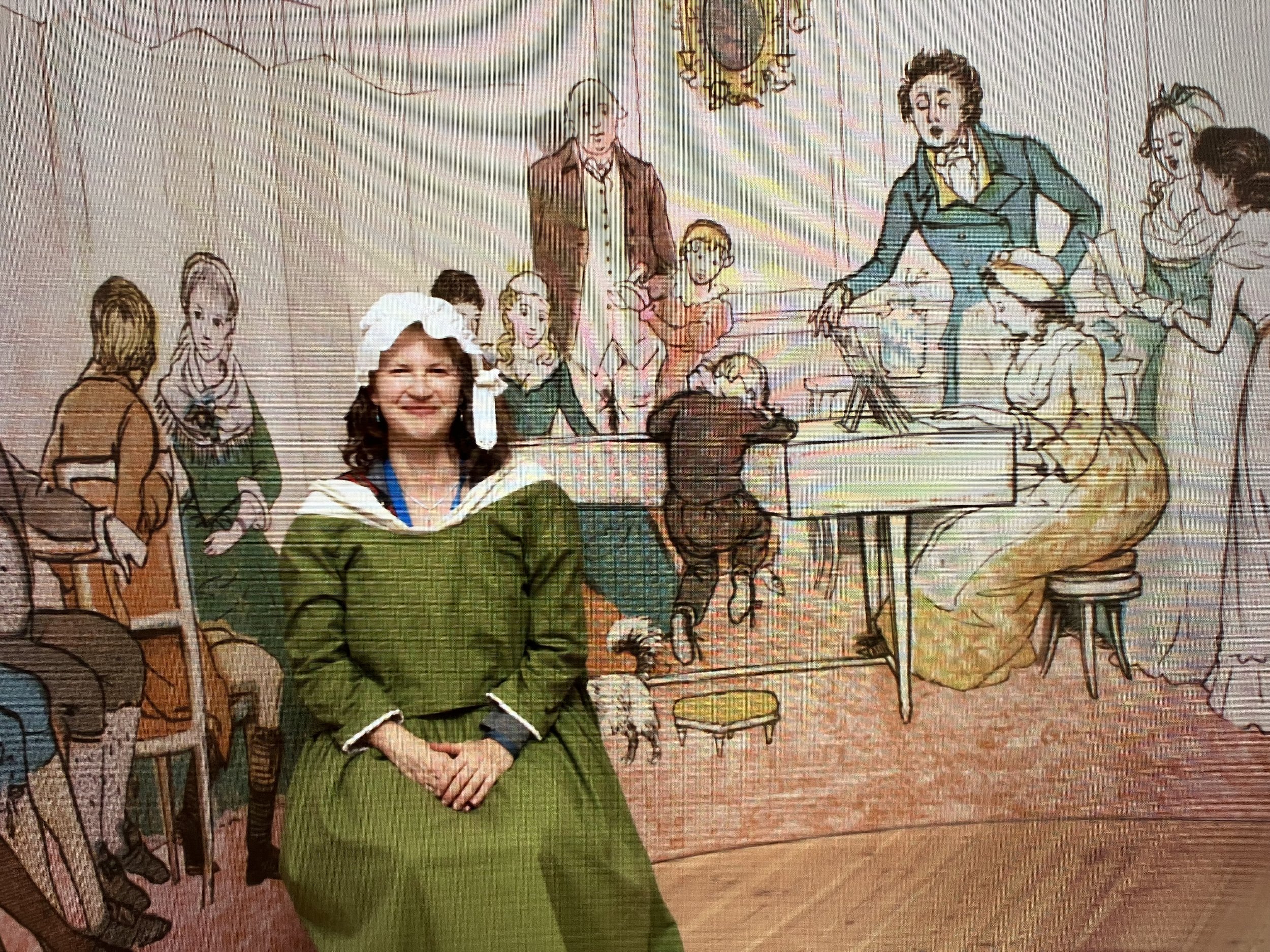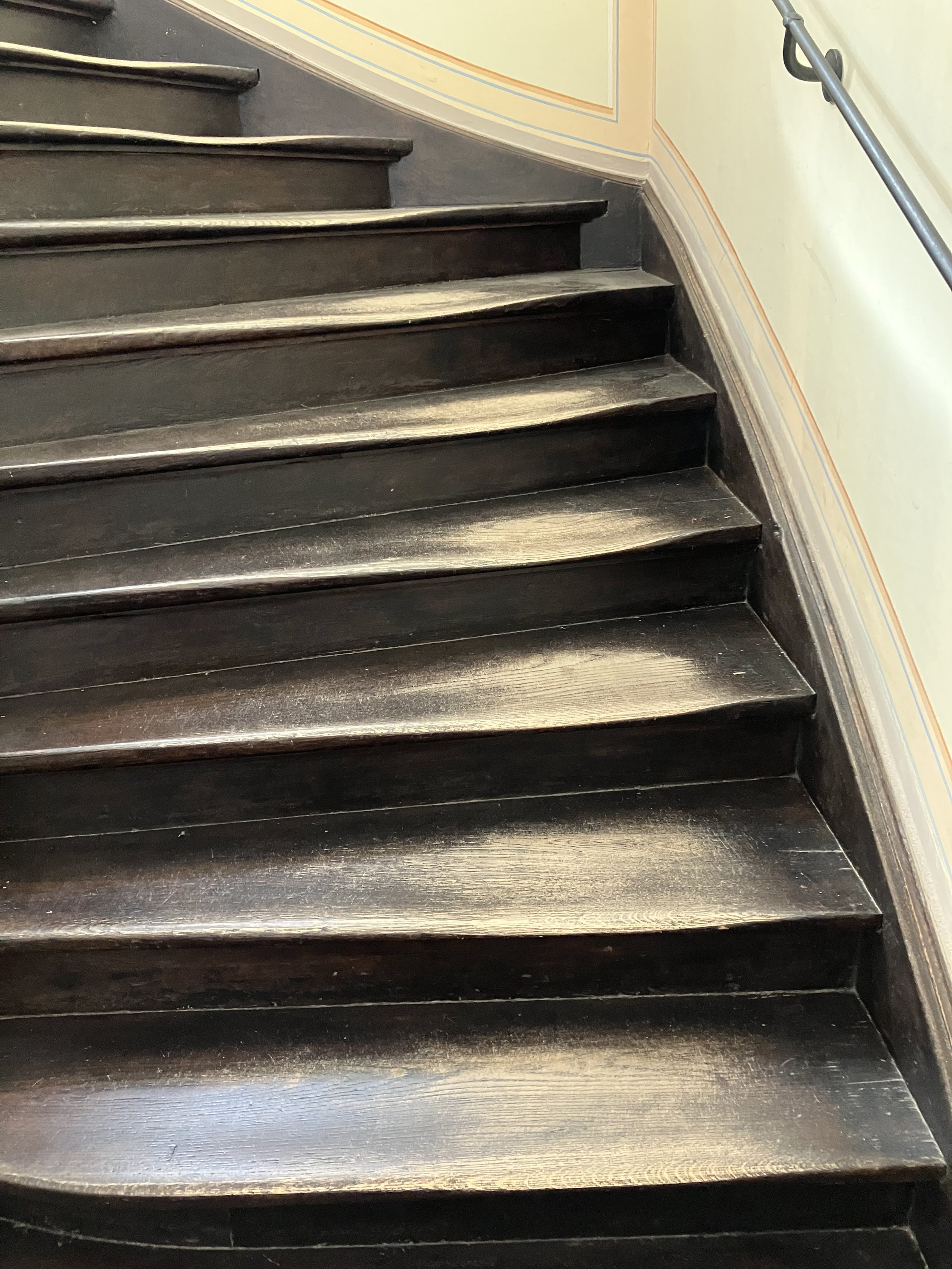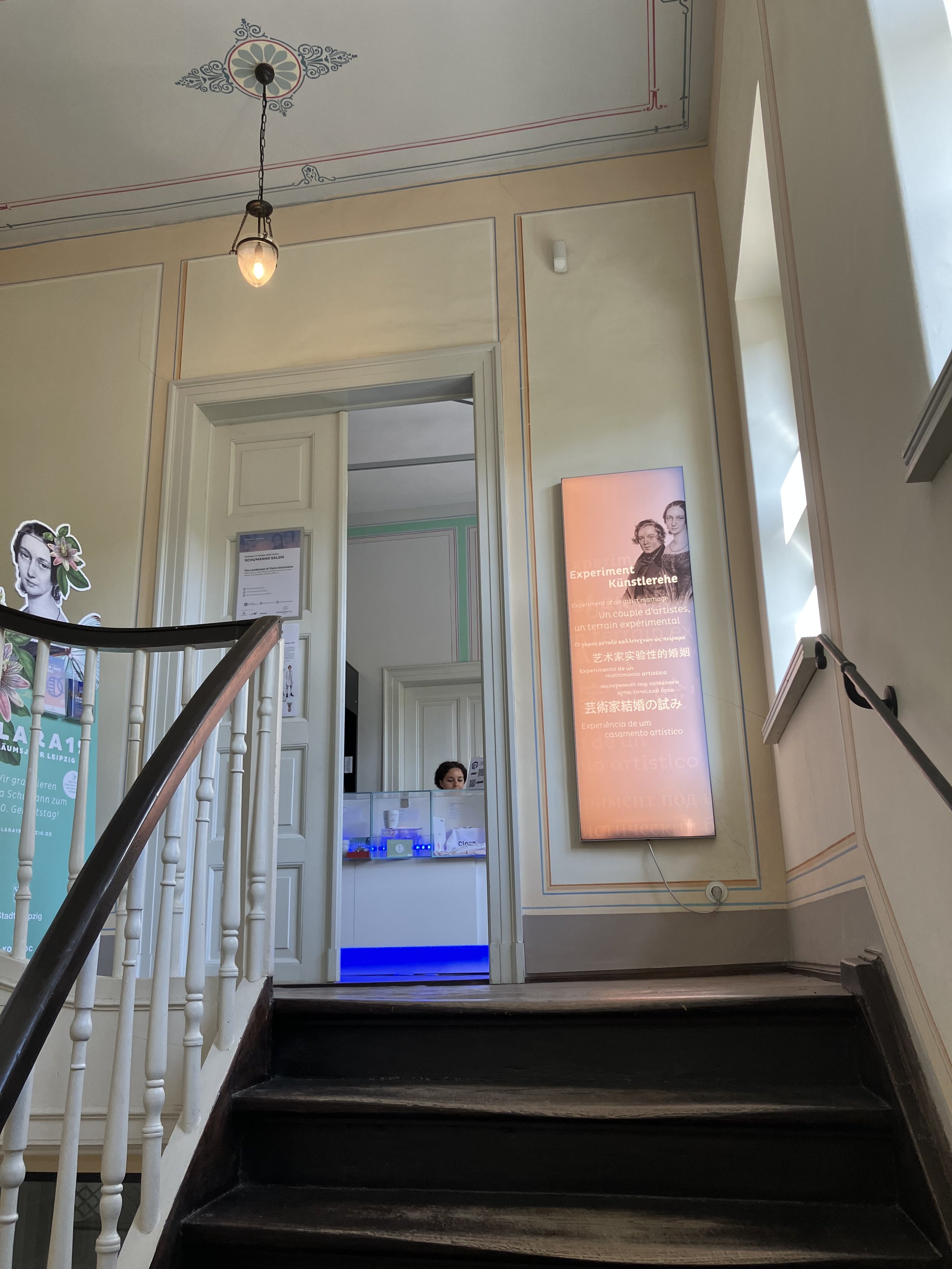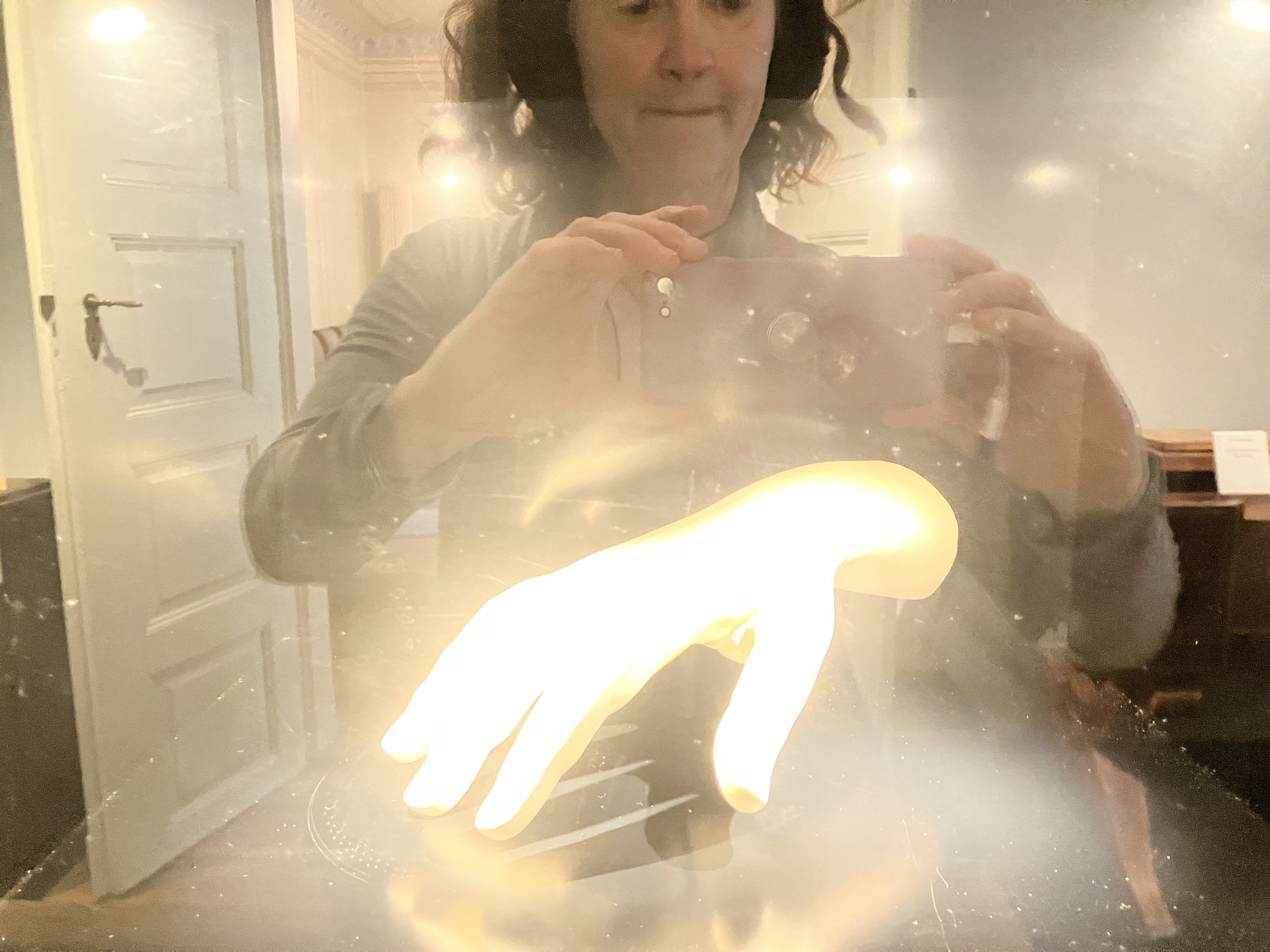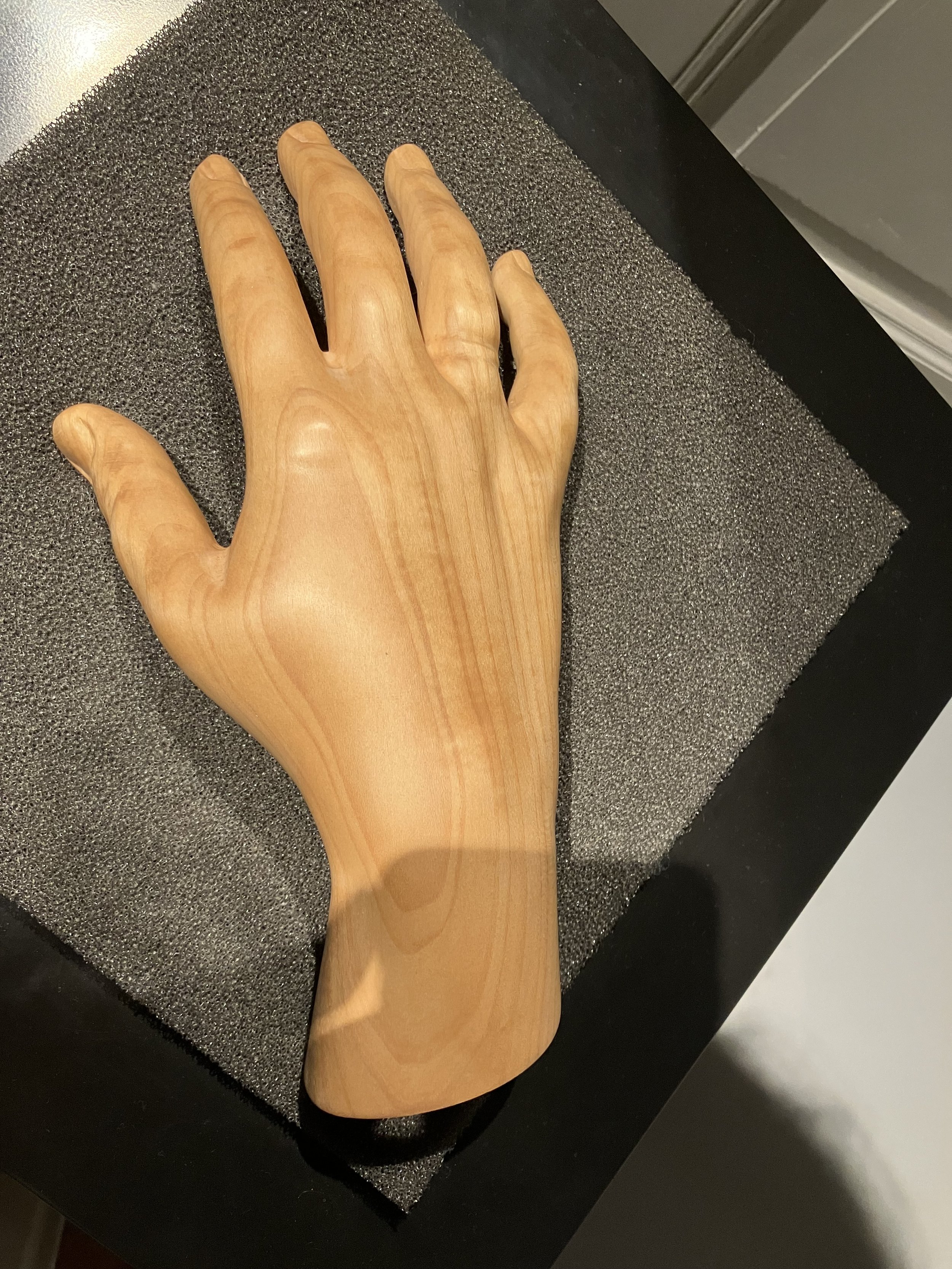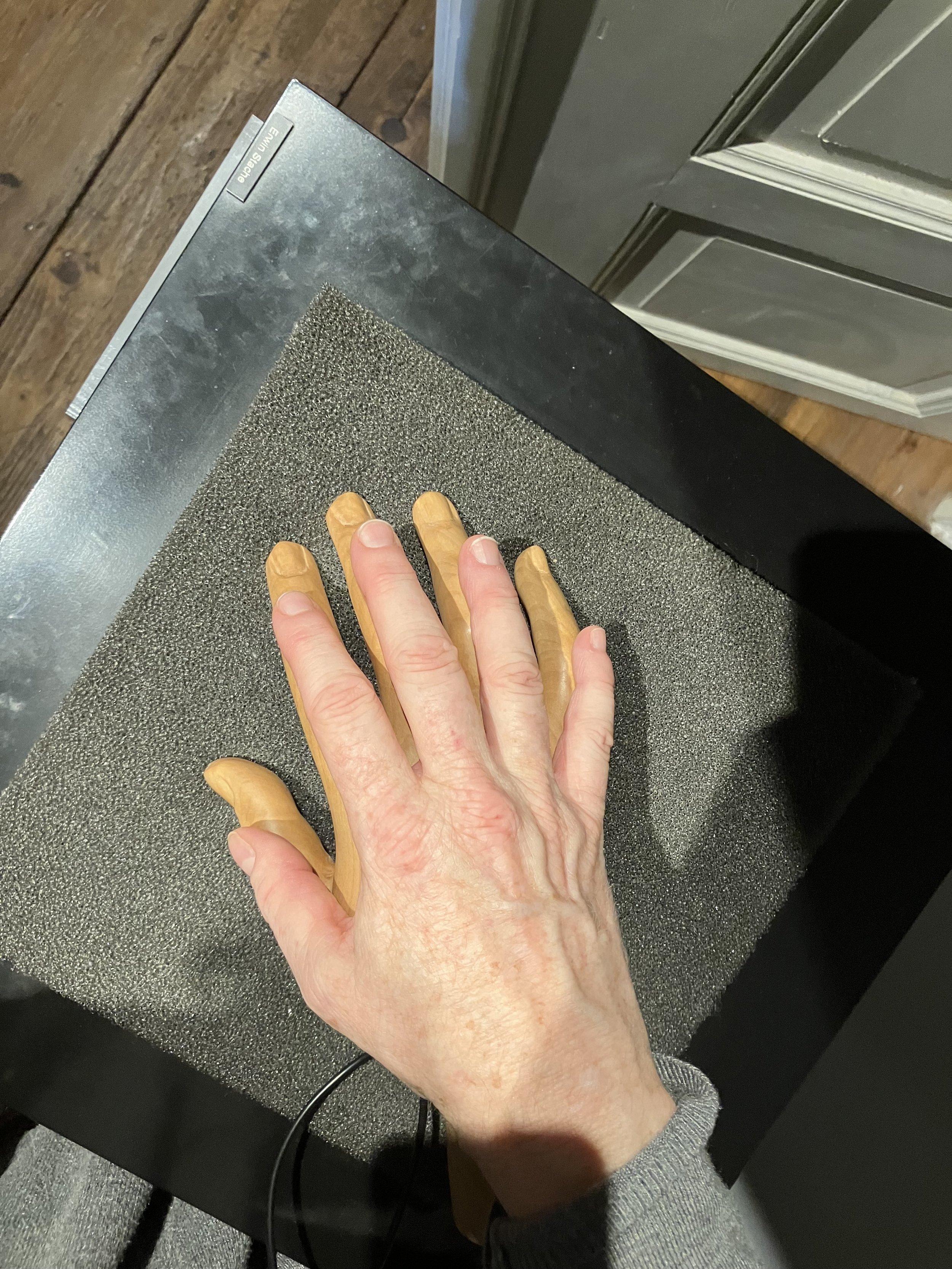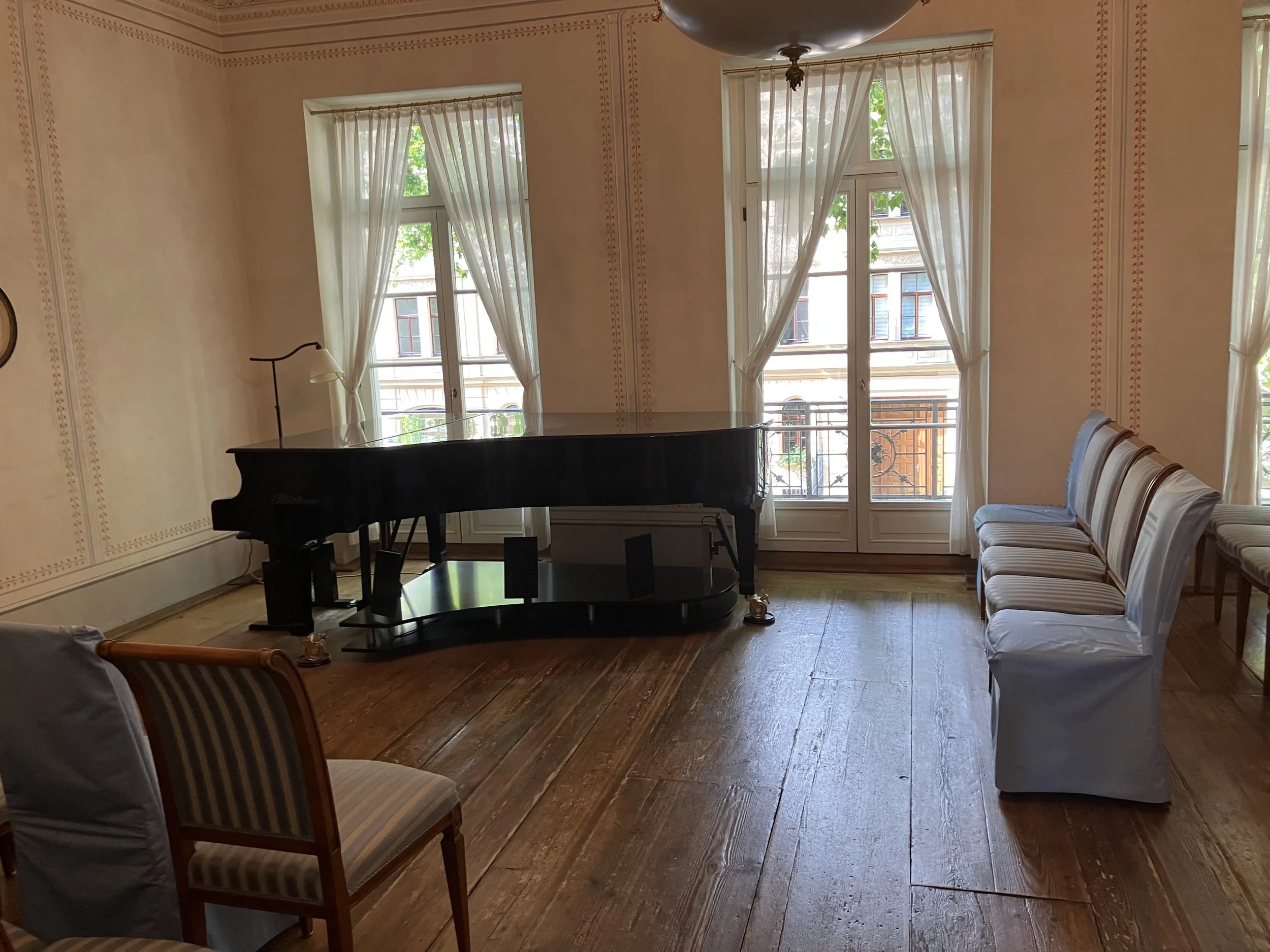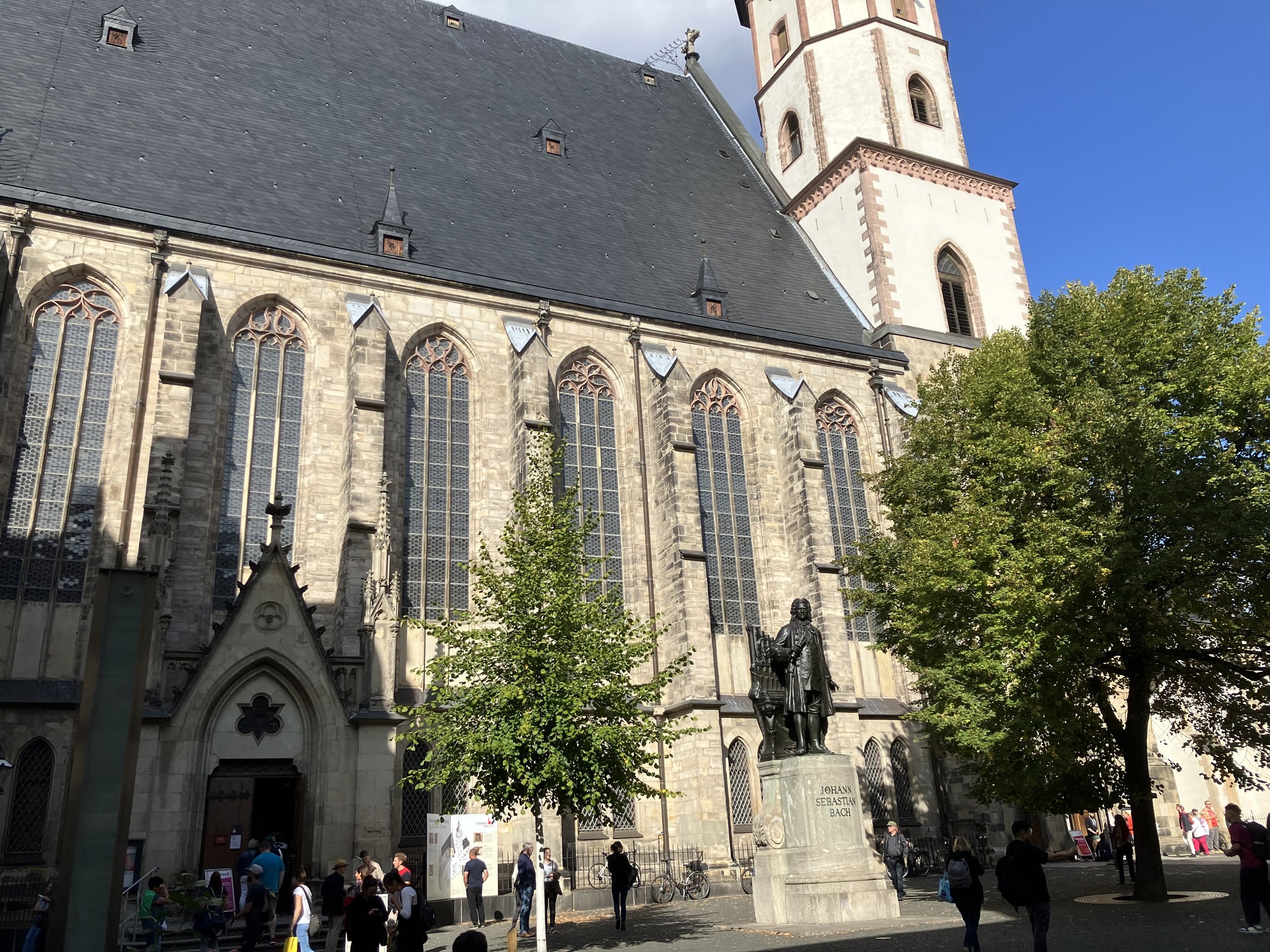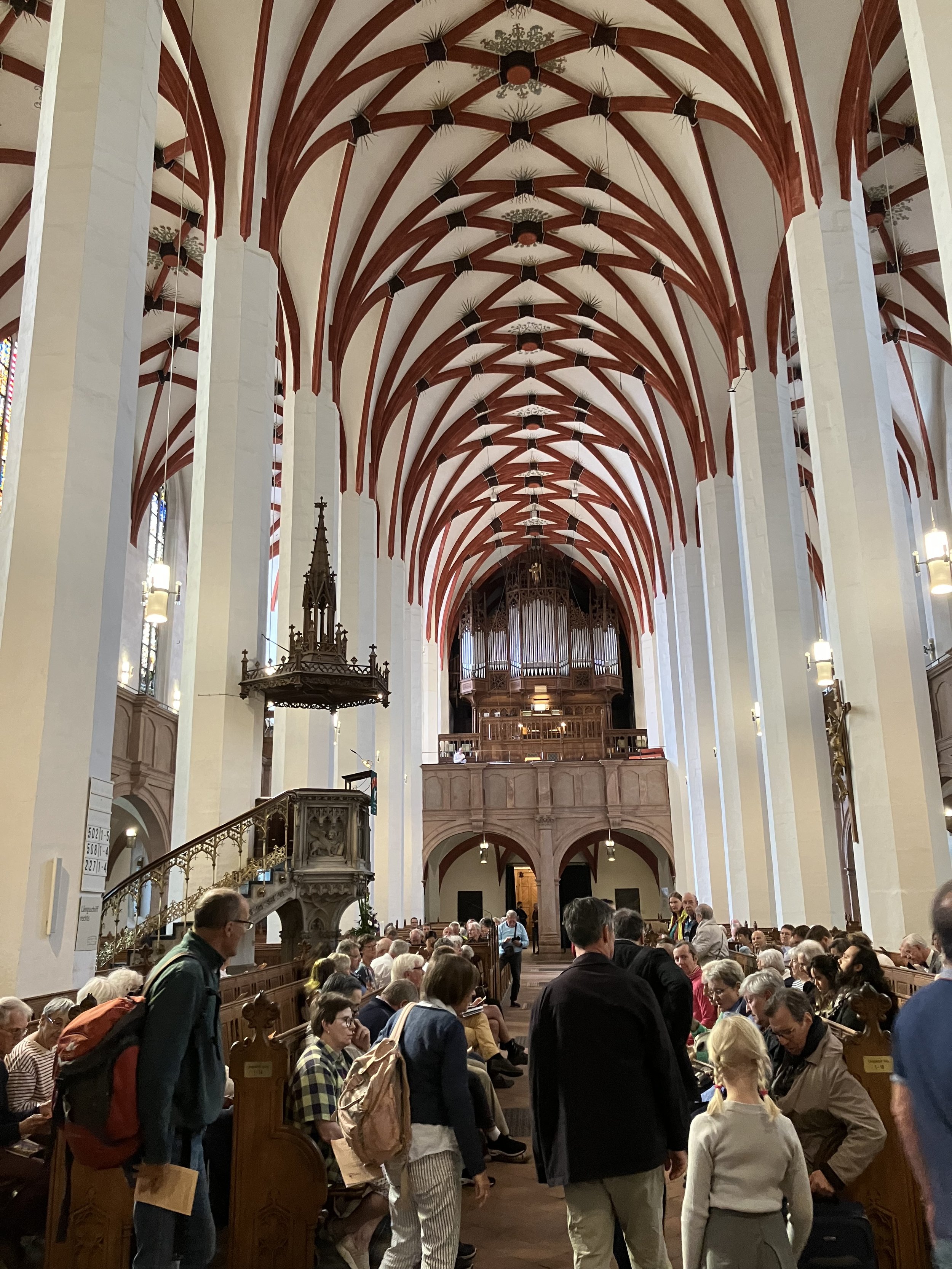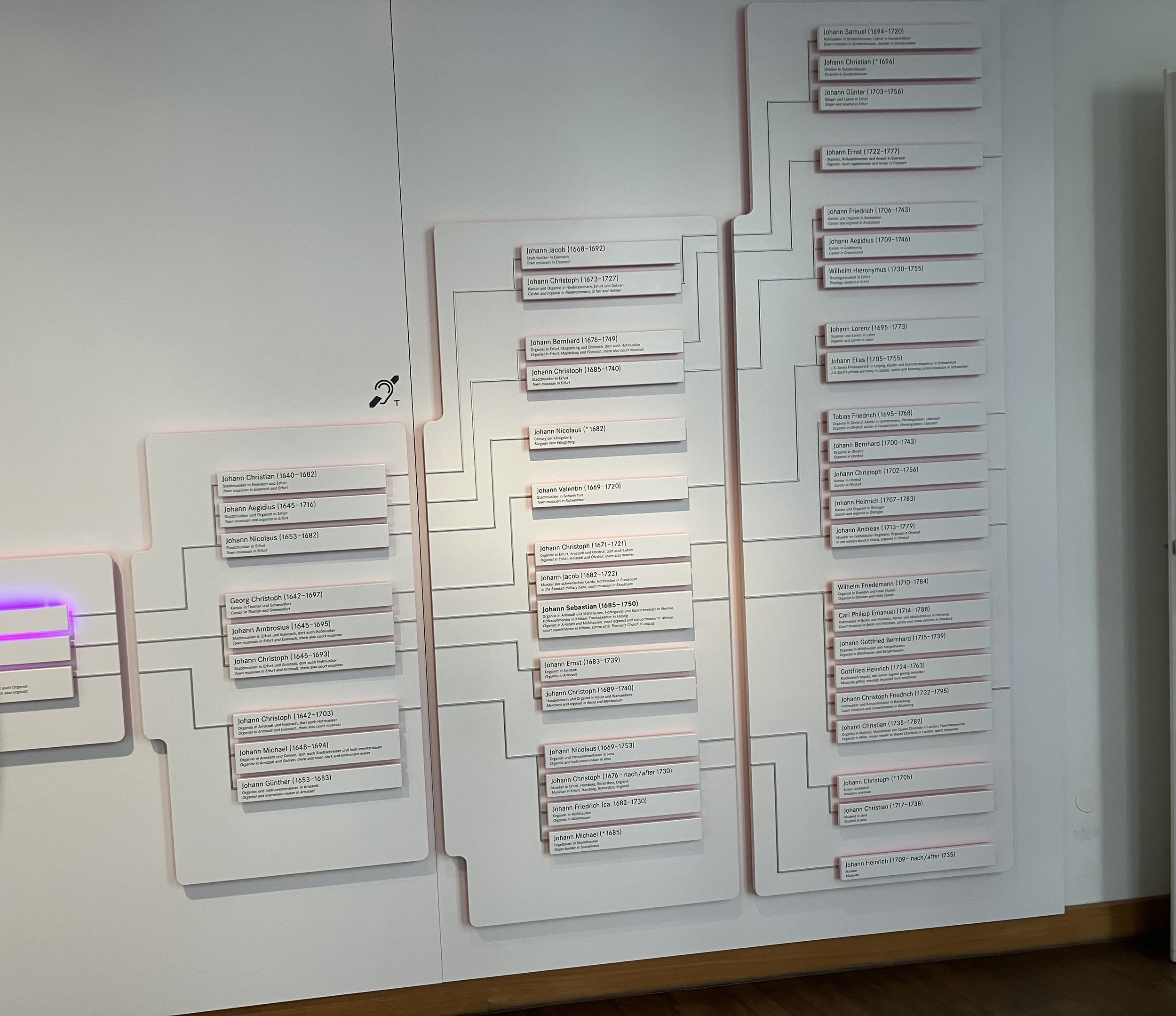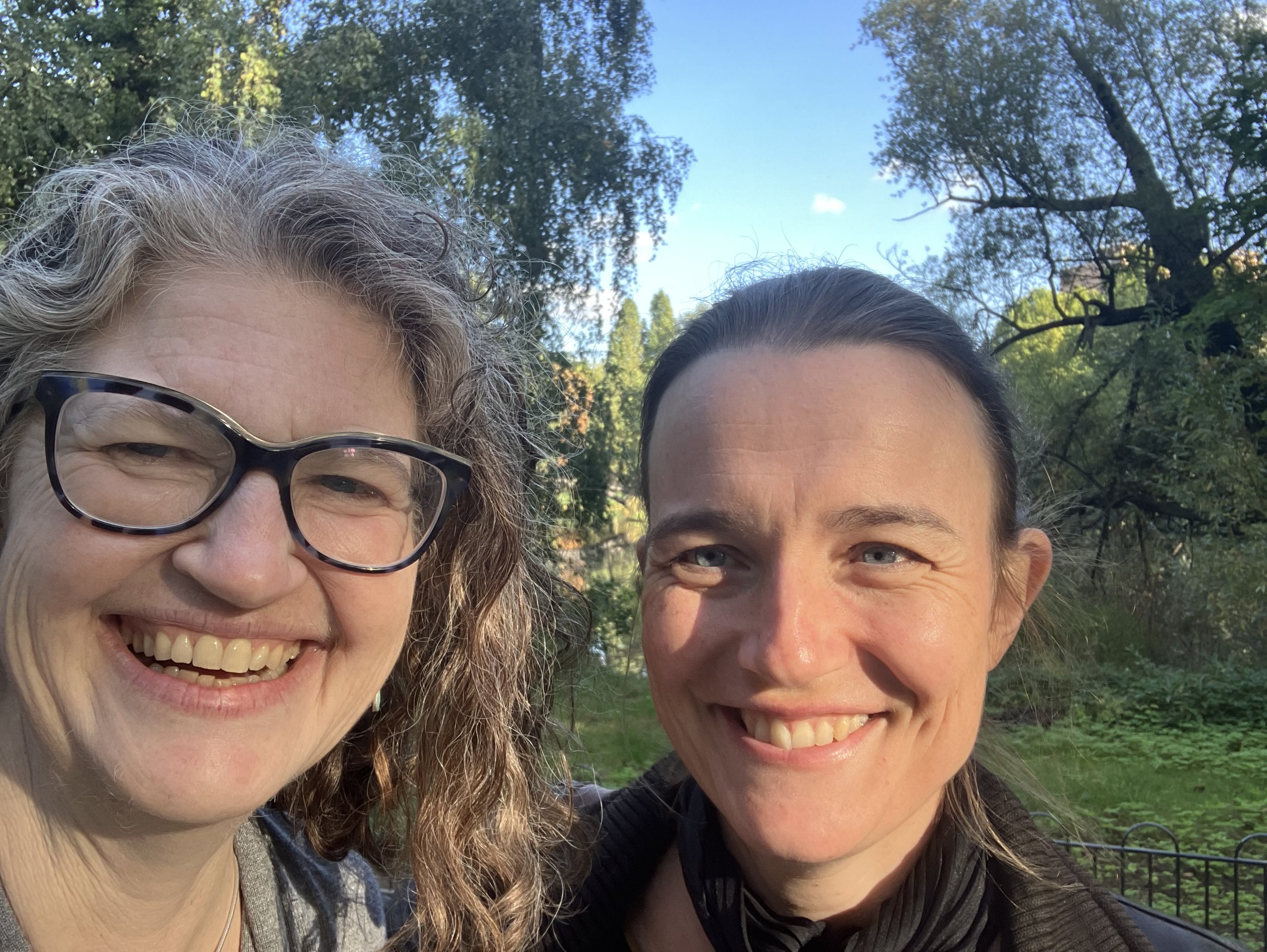Here’s what I wrote on the train back to Berlin, afterwards:
I failed. Here’s the story.
I flew across the ocean for a whirlwind weekend trip. Why? To hear the premiere of Agnes Tyrrell’s works for piano and choir in the Leipzig Gewandhaus, played by Kyra Steckeweh, the amazing pianist and scholar who released the editions of the Tyrrell’s sonata and other music. I’ve been so excited about hearing her play, and being in the audience to hear Agnes in concert for the first time, especially because it’s such a milestone to have her music premiered in one of the major concert halls of the world. I left campus Thursday at noon, and I’m returning (knock wood) Sunday evening (edit: I made it!) to teach a regular day on Monday. I’ve been feeling very glamorous and jetsetty about this plan. I might have been bragging about it just a tad.
I booked a flight to Berlin with a short connection in Iceland, which worked fine. I decided if the plane got in on time—it did—I’d take a couple of hours to go to the Berlin Staatsbibliothek, where they have two Agnes manuscripts. I did that (more on that later). Then I walked over to the main train station, and got on the train to Leipzig in plenty of time. Then my phone charger and cable both decided to stop working, so my battery percentage got lower and lower and lower. That was stressful but okay; I figured there would be a drugstore somewhere where I could buy replacements, but meanwhile I kept my phone in airplane mode to save the battery, so I didn’t have internet. Still stressful, especially with jet lag, but okay. But I fell asleep—just for five minutes!—and missed the Leipzig stop, and ended up in Erfurt, past Leipzig. Yikes. I bought a ticket back to Leipzig, and rushed back to the platform (with my battery at about 5%), figuring I would get to the concert without going back to the hotel to drop off my backpack and change. But then I GOT ON THE WRONG TRAIN, which I realized only when it reversed direction and said “next stop Erfurt.” So I ended up coming back to Erfurt again. I did not cry or have a tantrum, and I’m pretty proud of that. I bought a charger and cable. I asked a friendly Leipzig native to help me be sure I was on the right train, and that was an enjoyable conversation, including very kindly helping me get on the right tram and helping me to get off at the right stop. But I didn’t get to the concert hall till a few minutes after 9, hoping against hope that I could hear the end of the concert. Maybe they would have lots of speeches thanking benefactors, and a really long intermission, and I could somehow squeeze into the second half…but no, the concert was almost over and of course the ushers couldn’t let me in. So I missed the main reason I took this trip, and it’s 100% my fault.
So now the good things that did happen with this trip. Before the train debacle, I enjoyed my visit to the German Staatsbibliothek (state library). I do like a big fancy library building.
It was a thrill to get my very own researcher’s library card, and to walk up the big marble staircase.
And it felt good to be in a music reading room:
But the best part was holding documents by Agnes in my hands again. It was especially nice to see these pages I hadn’t seen in person before, and to recognize the handwriting so completely, now that I’ve been practicing from photos of her manuscripts so much. There are two song manuscripts there, both online already.
Again I found myself very moved by the care of the librarians of the past for these documents. Some librarian painstakingly repaired the edges of the pages with as much care as if they had been by a famous composer.
The scores came to the library from Mary Wurm, who was a well-known pianist (and student of Clara Schumann, and sister to a couple of other powerhouse women composer/pianists). I don’t know how she got them. Were she and Agnes connected somehow? Or did Agnes send copies of her work to other famous pianists besides Liszt? Are there other Agnes manuscripts in family troves somewhere?
Fast-forward through my train fail. In my one full day in Leipzig, I really did the singleminded musician’s tour: I went to the Mendelssohn museum, the Schumann museum, and the Bach museum (including a brief visit to Thomaskirche where he worked), and I had a wonderful three hour meeting with Kyra, the pianist and Agnes scholar, and I went to an evening art song concert/experimental theater piece. After the concert in the city center there were lots of people wearing red team scarves and hats and sweatshirts—obviously there had been a game, and I couldn’t help but laugh to think how different their Leipzig day had been from mine.
Anyway, here are some thoughts from the museums. The Mendelssohn one was my favorite. The house was huge; I had known that the family was well-off, but I was somehow still surprised.
Walking on the steps that Felix and Fanny walked on, holding the banisters they held, is great.
They had some lovely multimedia exhibits, including restored rooms with furniture, where you could imagine seeing a 19c composer at work:
The third floor was dedicated to Fanny, which I found surprising and inspiring. I hadn’t known if she’d be ignored in the exhibits, but she was absolutely given her due, including a lovely display of some of her letters:
There was a costume photo setup; I’ve never particularly gotten into superhero costumes, but turns out I’m all about the 19c salon cosplay:
After the Mendelssohn house I walked over to the Schumann house.
Again, it was exciting to walk on the stairs they walked on:
But my main takeaway from the Schumann museum is GOOD GOD CLARA’S HANDS WERE HUGE. I didn’t manage to get a photo that truly captures how giant they were, but there was a plaster cast of her hand and a wooden model made from that, and my poor little mitts looked like child hands compared to them.
I tried to line up my wrist crease and thumb joint with hers (the wooden hand was an interactive exhibit, so I was allowed to touch it); look at how much longer her fingers are than mine! My poor little pinky is about half the size of hers.
They also have the Schumanns’ music salon, with the original creaky wood floor.
I felt like I really got a picture of life in those 19c musical homes. Not exactly like what Agnes would have had, but maybe from the same universe. Apparently both the Mendelssohn museum and the Schumann museum barely mentioned Fanny and Clara just a few years ago, but have really updated their exhibits to include them in the past few years. So institutional change can happen. That’s heartening.
After the 19th century I went back in time to Bach. It was incredible to walk in the Thomaskirche, the church where he worked:
I didn’t do research in the archive, just walked quickly through the museum. They had one exhibit which really brought home how non-elevated JSB’s day job was: he had to do dorm duty at the boarding school. I took a photo with the famous JS Bach portrait:
I love Bach’s music and always will—I really do believe he had a direct line to the cosmos, however you want to define that.
But. It was quite something, after spending the morning being moved by the inclusion of Fanny and Clara in their museums, to see on the wall that JS Bach made a family tree, with careful notes, of only the male members of his family:
Many—most?—of those musicians had their early musical training with their mothers. And I just don’t believe that absolutely none of those mothers, and absolutely none of their daughters, had any musical talent. But there’s the gap, right there on the wall, written by the master himself: the women are completely missing from the history. Imagine how much more we would know about Bach’s family if we knew about the other half of it.
After all my museuming I got to meet with Kyra, the world’s foremost Agnes scholar, and that was an absolutely wonderful conversation.
She was so generous with her time: we sat at a cafe and then took a long walk through the park, and it was so amazing to talk to another current Agnes scholar, to be with another person who knows the Agnes manuscripts. I was flipping through my phone to find a particular one to talk about, and she recognized pieces from a glance at a photo like I do. More, because she’s typeset ones I haven’t practiced. Talking about the sonata with someone else who’s been practicing it was incredible. It was so fun to talk about the rep we’re going to play and record in the next couple of years: we’re both doing the sonata, and it will be important to have multiple recordings of it. But after that she’s doing the rhapsodies and the second impromptu and the fantasiestucke, and I’m doing the etudes and the third impromptu and some of the small unpublished pieces and the songs. It was a delightful moment when we realized she’s doing the second impromptu and I’m doing the third, so we’re not doing the same one now. She’s also working on some other composers; she’s doing a whole Dora Pejacevik project, which is exciting. We talked about the freedom and responsibility of making musical choices without the weight of an existing performance tradition, and said that we both have the goal of playing the music well enough that others will want to play it. She is such an inspiring scholar—so brilliant and passionate and warm and nerdy and just a fantastic human. I made a new friend, so the trip was absolutely worth it…even if I didn’t get to hear her concert. She said it went well, and that it was very moving to play it, and audience members came up to her afterwards with tears in her eyes.
I wish I had been one of them. But even though I wasn’t, I’m still glad I took the trip.


